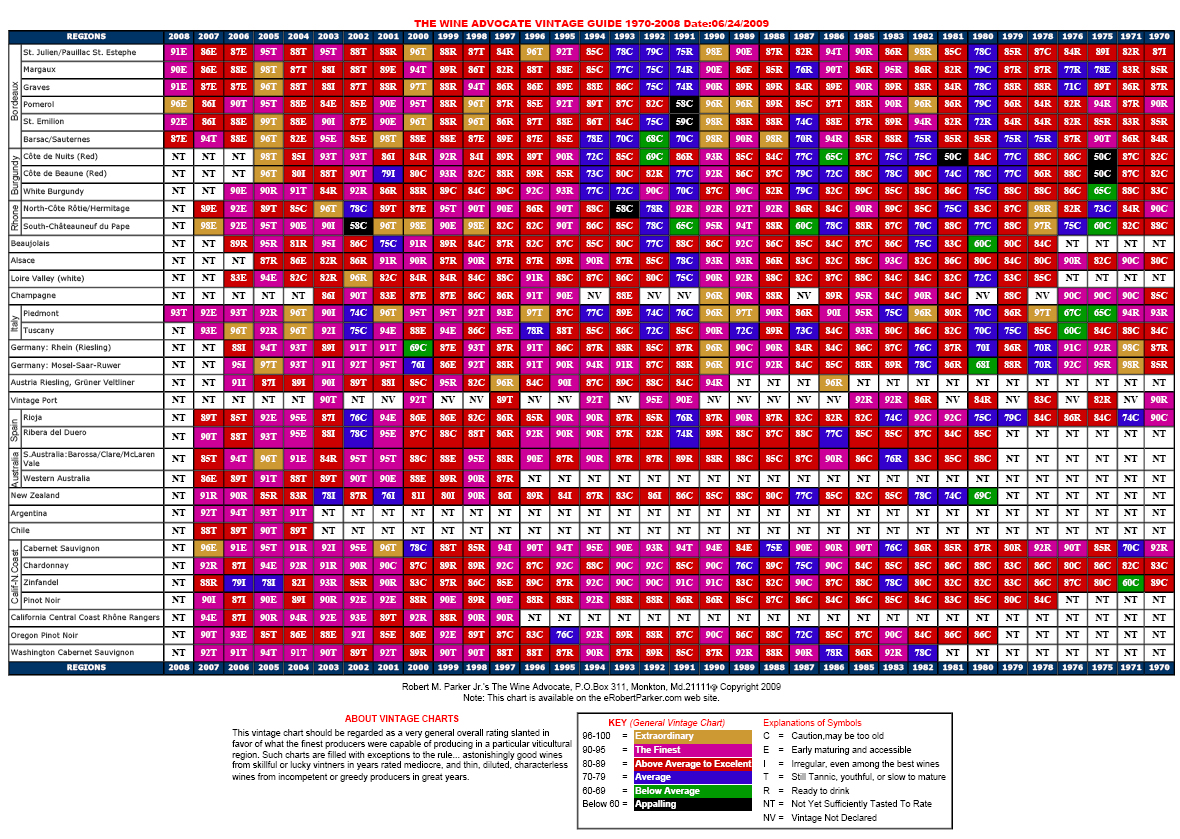So I’ll be the first to admit that I don’t really use vintage charts. Â Now that’s not to say that I don’t pay attention to what the vineyards, wineries, and wine makers are saying about particular years, and I’ve certainly found different years of the same wine to be better or worse, but I don’t as a general rule look to a vintage chart before making a wine purchase.
Now that’s not to say that I don’t think vintage charts don’t have value, because they do, but most of us just don’t carry one around with us. Â However, that’s changing thanks to smartphones. Â Sites like Wine Spectator are now offering apps that allow you to take vintage charts with you wherever you are to reference them with just the touch of a button.
So, with that in mind, I ask you my readers – how do you use vintage charts? Â Do you look to see what years are good for a wine you’re looking for before buying? Â If so, how well is it working out for you? Â Leave me a comment letting me know how you use vintage charts and at the end of the month I’m going to pick a comment at random and that person will get a 1 year subscription to Wine Spectator.
I look forward to reading your comments and good to everybody.

I find vintage charts frustrating. At the low end of the market, they’re practically useless–a $15 bottle from anywhere is ready to drink when you buy it, and the chart doesn’t even touch on things like California Petite Sirah or Washington Riesling anyway. And I’ve never seen a vintage chart that will tell you anything about smaller but interesting wine producers like Lebanon, Greece, or Mexico.
At the higher end of the market, you need a lot more detail. All of Italy is broken down into two categories? Really? And if you’re a serious Burgundy collector a year will tell you something but you’re probably closely following individual Domaines, and investment is going to depend on much more specific factors.
The target audience then seems to be the person with a lot of money and storage space who collects wine, but doesn’t know much about it and doesn’t trust the advice of the person selling it.
The rants above focus on this example you posted, but could very well apply to the dozens of others I’ve seen. I tried using them for a few years, and even reworked them into pocket-sized versions I could carry around with me. They were just never helpful at all, and I eventually just ignored them.
I definitely share some of the thoughts in your argument. While I can see the value in a vintage chart if I’m dropping several hundred dollars on a bottle of wine (which doesn’t happen), picking up a $20 at my local store isn’t really something I need one for.
Itend to rely on personal recommendations. The idea of a chart seems clinical at best. I mean don’t misunderstand me, my friends have been known to steer me wrong – but the advice is worth nearly the price paid. Anyway, i am going to research the charts to see if I can add them to my repetoir. Thank you!!